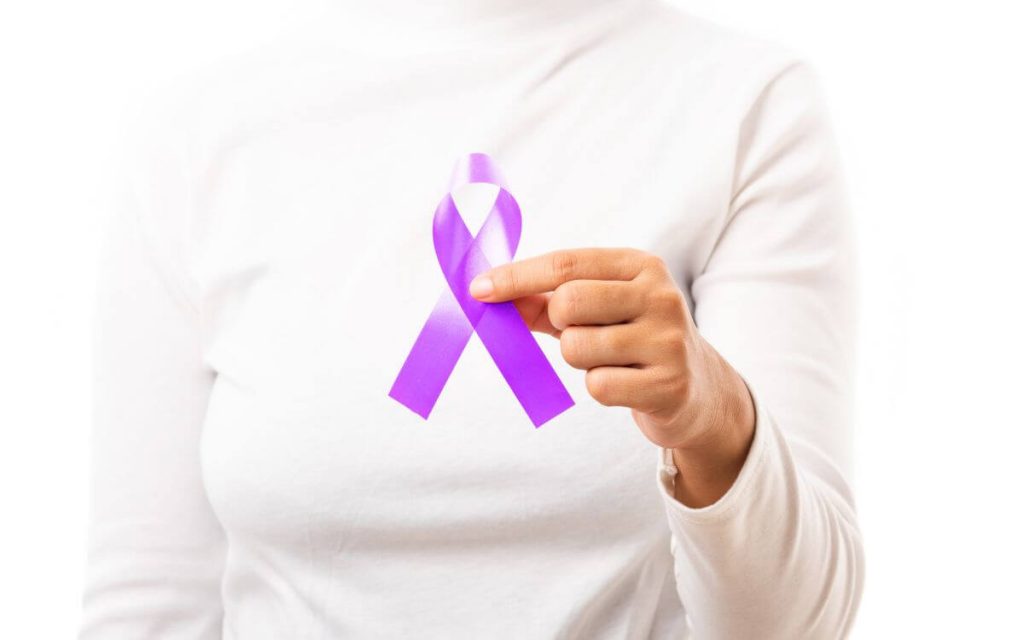How to explain fibromyalgia to your partner?
It can be difficult to explain fibromyalgia to your partner who never suffered from it, but luckily, there are some ways you can make the conversation a little easier. Explain to your partner that fibromyalgia is a real, chronic condition that causes widespread pain and fatigue. It is not simply “in your head” or something you can just “snap out of.”
Here are a few tips for explaining fibromyalgia to your partner:
- Be open and honest about your symptoms.
- Your partner needs to understand what you are dealing with on a daily basis. Be sure to explain all of your symptoms, including fatigue, brain fog, and pain.
- Describe how fibromyalgia affects your daily life.
- Your partner should understand how fibromyalgia limits your daily activities. For example, you may not be able to participate in certain activities or exercise as much as you used to.
- It is important to manage your expectations and let your partner know that there is no cure for fibromyalgia. However, there are treatments that can help lessen your symptoms.
- Even though there is no cure for fibromyalgia, your partner can still be a tremendous source of support. Let them know that you still need their love and understanding.
- Seek professional help if needed help with the explanation of fibromyalgia.
If you find it difficult to explain fibromyalgia to your partner, or if your relationship is suffering because of the condition, it may be helpful to seek professional counseling. A counselor can help you and your partner communicate more effectively and learn how to best support each other.
What is fibromyalgia?
Fibromyalgia is a chronic condition that causes widespread pain and fatigue. It can also cause other symptoms like sleep problems, memory issues, and mood swings. The exact cause of fibromyalgia is unknown, but it is thought to be related to changes in the central nervous system.
If you are the one who supports your partner, know that there is no cure for fibromyalgia, but there are treatments that can help lessen the symptoms.
Fibromyalgia symptoms can vary from person to person, and their severity can also vary. For some people, fibromyalgia is a mild condition that causes occasional discomfort. For others, it can be a more severe condition that causes chronic pain and fatigue.
If you have fibromyalgia, it is important to work with your doctor to develop a treatment plan that is right for you. There is no one-size-fits-all approach to treating fibromyalgia, so it is important to find a plan that works for you. It is a difficult condition to live with because it causes widespread pain and fatigue. These symptoms can make everyday activities difficult or even impossible to do.
Fibromyalgia not only affects the person who suffers from it but also their partner. It can be difficult to deal with the pain and other symptoms that come with the condition. However, there are ways to manage fibromyalgia and make life easier for both the sufferer and their partner.
One of the best things you can do for your partner is to educate yourself about fibromyalgia. This will help you understand what they are going through and how you can best support them. There are many resources available online and at your local library.
It is also important to be patient and understanding. Fibromyalgia can cause a lot of pain and fatigue, which can make it difficult for your partner to do everyday tasks. They may need to take breaks more often or need help with things that they used to be able to do on their own.
You should also try to be supportive and positive. Helping your partner manage their symptoms can be frustrating, but it is important to remember that you are in this together. Working as a team can make dealing with fibromyalgia much easier.
Fibromyalgia is a chronic condition that causes widespread pain and tenderness in the muscles and joints. It can also cause fatigue, sleep problems, and depression. While the exact cause of fibromyalgia is unknown, it is thought to be related to changes in the way the brain processes pain signals.
Fibromyalgia is a debilitating condition that can have a major impact on both the sufferer and their partner. The pain and fatigue can make it difficult to work, socialize, or even take care of everyday tasks. There is no cure for fibromyalgia, but there are treatments that can help manage the symptoms. These include medication, exercise, and relaxation techniques.
If you are in a relationship with someone who has fibromyalgia, it is important to be supportive and understanding. There will be good days and bad days, but try to maintain an open line of communication. Working together, you can find ways to make life easier for both of you.
If your partner has fibromyalgia, there are a few things you can do to help her manage the condition. Getting regular exercise, getting enough sleep, and managing stress can all help lessen the symptoms. There are also medications that can be used to treat some of the symptoms.
If they struggle to manage the condition, talking to a team of doctors who are familiar with fibromyalgia can advise you both about what treatment options are available to your loved one. I’ll expand on this after answering the question of what causes this chronic disorder…
First though, since you are interested in fibromyalgia, I wrote a “Fibromyalgia for Caring Partners” e-Book, in which 1st chapter is absolutely FREE!
FREE Fibromyalgia e-Book
Fibromyalgia for Caring Men

What causes fibromyalgia?
Changes in the central nervous system of people with fibromyalgia may be caused by a combination of genetic and environmental factors. Researchers have found that certain genes are associated with an increased risk of developing fibromyalgia. In addition, stressful or traumatic events, such as car accidents or viral infections, may trigger the onset of fibromyalgia.
The environment in which fibromyalgia develops may play a significant role. Research suggests that people who grew up in homes where their parents had chronic pain or mental health conditions may be more likely to develop fibromyalgia themselves. Fibromyalgia is also more common in women than men.
Genes associated with fibromyalgia seem to be involved in the way the brain processes pain signals. These genes may also make a person more sensitive to pain.
Stressful events associated with fibromyalgia may cause changes in the way the body responds to pain. These changes may be due to hormones and other chemicals released by the body in response to stress. When it comes to accidents and viral infections, fibromyalgia seems to develop more often after these types of events. This may be because the body’s response to stress is more intense.

Who specializes in fibromyalgia?
There is no one type of doctor who specializes in fibromyalgia, as it is a condition that can be treated by a variety of different specialists. However, some doctors who may be able to help include:
- Rheumatologists: these are doctors who specialize in conditions that affect the joints and muscles, like arthritis.
- Pain specialists: these are doctors who specialize in treating pain.
- Neurologists: these are doctors who specialize in conditions that affect the nervous system, like migraines.
- Psychiatrists or counselors: these are doctors who can help with conditions that affect mood, like depression or anxiety.
There is no single doctor who can help but a team of specialists can help your partner better deal with the symptoms. Fibromyalgia is a condition that can be difficult to manage, but with the right team in place, it is possible to live a relatively normal life.
A rheumatologist can help people with fibromyalgia by prescribing medication to relieve pain, stiffness, and fatigue. They may also recommend physical therapy or other exercises to help strengthen muscles and improve range of motion.
A pain specialist can help people with chronic pain by prescribing medication, doing injections, or recommending other treatments. To treat chronic pain, it is important to find the source of the pain and treat that as well.
A neurologist can help people with migraines by prescribing medication. Additionally, to treat migraines, it is important to find the trigger and avoid it if possible. People with fibromyalgia may experience migraines that feel like a throbbing or pulsing pain on one side of the head.
A psychiatrist or counselor can help people with fibromyalgia by treating mood disorders that may be associated with the condition. They may also recommend lifestyle changes to help manage symptoms. Mood changes associated with fibromyalgia can include depression, anxiety, and irritability.
How is fibromyalgia diagnosed?
A study has found that it takes an average of six years for people with fibromyalgia to be diagnosed. It has been conducted by researchers at the University of Manchester in the UK, who looked at data from over 500 people with the condition.
The findings showed that it takes an average of three years for people with fibromyalgia to see a doctor about their symptoms. However, it takes an additional three years, on average, for a diagnosis to be made.
The study’s lead author, Dr. Fiona Jones, said that the findings highlight the need for better awareness of fibromyalgia and its symptoms. “There is a need for greater public awareness of the condition and its symptoms, as well as more training for healthcare professionals in order to improve diagnosis and management,” she said.
The study was published in the journal BMC Musculoskeletal Disorders.
Fibromyalgia is often hard to diagnose because the symptoms can be similar to other conditions. In order to diagnose fibromyalgia, a doctor will likely ask about your partner’s medical history, do a physical exam, and also order blood tests, X-rays, or MRIs to rule out other conditions.
There is no one specific test for fibromyalgia but tender points can be used as part of the diagnosis. Tender points are specific areas on the body that are painful to touch. If you have at least 11 of these tender points, it is likely you have fibromyalgia.
There are 18 possible tender points associated with fibromyalgia. They are located on:
- The neck
- The shoulders
- The chest
- The elbows
- The hips
- The knees
Fibromyalgia tender areas usually hurt when pressure is applied. Tender points can also be found in other parts of the body, but these are not as specific to fibromyalgia.

What are the treatment options for fibromyalgia?
There is no cure for fibromyalgia, but there are treatments that can help lessen the symptoms. Treatments include:
- Exercise: Getting regular exercise can help reduce pain and fatigue.
- Medications: There are a number of medications that can be used to treat the symptoms of fibromyalgia. These include painkillers, antidepressants, and anti-seizure medications.
- Counseling: Talking to a counselor or psychiatrist can help with conditions that affect mood, like depression or anxiety.
- Complementary therapies: Some people find that complementary therapies, like massage or acupuncture, help lessen their symptoms.
Summary…
There is no one specific test for fibromyalgia, but tender points can be used as part of the diagnosis. Tender points are specific areas on the body that are painful to touch. If you have at least 11 of these tender points, it is likely you have fibromyalgia.
There is no cure for fibromyalgia, but there are treatments that can help lessen the symptoms. Treatments include things like:
- exercise
- medications
- counseling
- complementary therapies
It is important to find a treatment plan that works for your partner as every person experiences fibromyalgia differently. Good communication and understanding from both partners are key to managing fibromyalgia.


About Me
Hi, I’m Lucjan! The reason why I decided to create this blog was my beautiful wife, who experienced a lot of pain in life, but also the lack of information about endometriosis and fibromyalgia for men…
